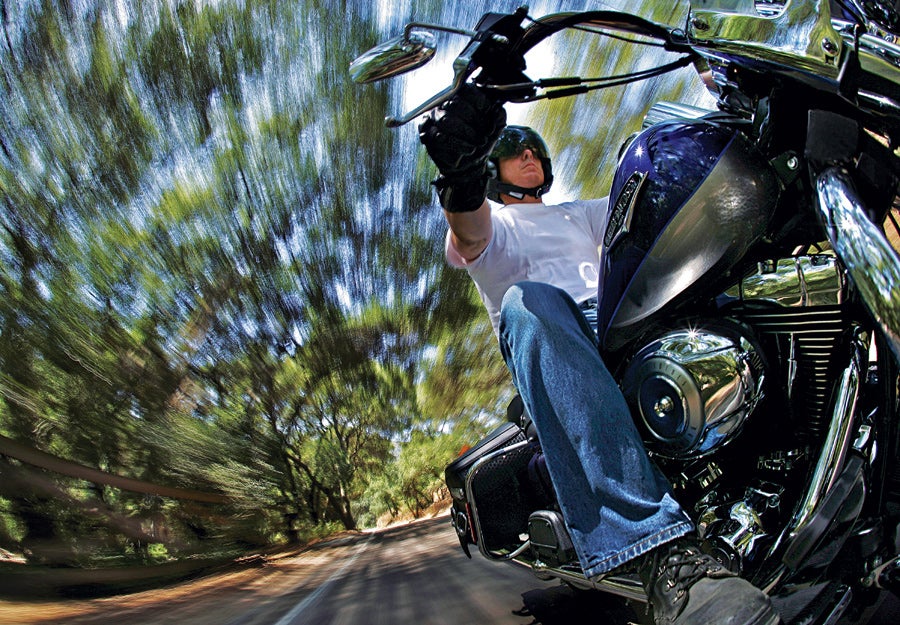How to photograph moving vehicles
A step-by-step guide to capturing that perfect motion shot.

This article was originally published on Popphoto.com
When the German magazine Stern approached Donald Miralle to shoot a new line of Harley-Davidson motorcycles, the Carlsbad, California-based commercial and editorial photographer was thrilled. Then it hit him: “I’d had very little experience shooting moving vehicles!”
It helped, though, that Miralle had a particular image in mind-the one shown here. “My aim was to find an angle on this subject that no one had yet documented,” he says. “While I may not have entirely succeeded, I feel I did place my own perspective and spin on it.”
Capturing that image required some very specialized gear. Miralle attached his camera to the Harley using a redundantly secured set of clamps and brackets from Manfrotto. Riding just ahead, in the back of a fiatbed pickup, he tripped the shutter using a pair of PocketWizard Plus II Transceivers ($170, street).
If you try this, start slow. Even motorcycle speeds of 5-10 mph can produce thrilling motion blur. And they’re safer.
Two Manfrotto Magic Arms and three Super Clamps held his Canon EOS-1Ds and 15mm fisheye lens on the bike.
Step 1: Get The Right Gear
A full-frame camera (Miralle used a Canon EOS-1Ds Mark II) captures a wider view than APS-C-sized sensors. To get full views of both the bike and the background, Miralle chose a 15mm f/2.8 Canon EF fisheye lens.
Step 2: Scout Locations
Shady sites will allow the slower shutter speeds you need to record motion blur. “Here, I liked the way the trees and blips of sky created a visual texture,” says Miralle. “A plain blue sky wouldn’t have conveyed speed or motion.” For sharpness, seek out smooth roads.
Step 3: Secure And Stabilize The Camera
Miralle attached two Manfrotto Super Clamps to the bike’s front fender rail. Then he used two Manfrotto Magic Arms extended from the Super Clamps, attaching one to the base of the camera and the other, with another Super Clamp, to a metal stud in the hot-shoe. Finally, he secured everything possible using safety cables that he’d attached to the bike.
RELATED: Simplicity is the best part of DJI’s Osmo Pocket Stabilized camera
Step 4: Play With Shutter Speeds
You need a long shutter speed for beautiful motion blur. But set it too long and you risk a blurry biker. Best: 1/10 to 1/30 sec.
Final Step: Shoot Like Crazy
The cool part about this assignment? Miralle only needed one good shot. The uncool part? It took hundreds of pictures and two days to get it.